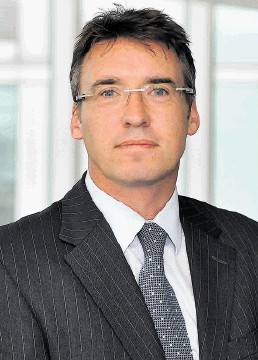
When we trust someone to perform a task on our behalf it is natural to expect them to deliver. When we trust scores of suppliers to deliver hundreds of services, often across the globe, it gets a bit more complicated.
Yet every day the oil and gas industry relies on a complex web of suppliers who are trusted to deliver on its production and growth targets. Managing that complexity is critical to the delivery of business services and maintaining resilience.
The financial and service risks associated with this spend has prompted some companies to robustly review relationships, contracts and commercials to really test if value for money is being delivered.
The underlying risk is that established supplier management models may be tolerating deteriorating quality levels; resulting in financial loss, health and safety risks or delay. It is against this backdrop that we are seeing stakeholders demanding improved returns on investment in third-party spend as well as a reduction risk.
This is not a small issue. If anything, costs have continued to rise as the market for the best suppliers is stretched from both a capacity and capability perspective.
In 2011, oil and gas spend on third-parties equated to about $490billion. That means a substantial part of most operational budgets is associated with goods and services provided by third-party suppliers.
Some efficiency campaigns have led to incremental, short-term successes, and others have adopted an evidence-driven approach that drives a step-change in sustainable performance from third-parties.
It’s no surprise then that some businesses are looking hard at the ways they can track the commercial and service relationships they have with providers and suppliers.
Some of our clients are forming ‘Commercial Excellence’ SWAT teams with the objective of driving and sustaining higher performance from mission critical third-party relationships.
These multidisciplinary teams have a range of skills spanning cost reduction; contract management, procurement and data analysis. Their primary role is to understand the commercial complexities of the relationships, but they are also looking at the motivations, behaviours and practices of the third-party organisations.
This in-depth analysis supports renegotiations, review and supplier compensation. These initiatives have achieved financial benefits in the region of 10%-15% of the total contract value. But the benefit extends beyond financial savings. They have the added benefit of improving long-term performance through better relationships, enhanced resilience, managed risks and compliance.
To quote a global energy company: “Commercial analysis was critical in developing our strategy for getting better terms, better supply relationships, recovering backdated savings and revising the contractor management process . . . leading to more than £25million per annum in savings”.
Capital projects are an area where this approach can add real value. Oil and gas capital projects tend to be big, complicated, expensive and risky.
Delivering on multi-year capital projects requires unique risk and supplier management capabilities, utilising commercial structures where third-parties have a major role in critical path towards growth and improved performance.
The problem is that the quality of service to some large, multi-year capital projects can be surprisingly variable.
When viewed from 50,000ft the suppliers can appear to be delivering against expectations, but the devil is definitely in the detail. Issues arise from service levels that are poorly scoped and specified, or simply misunderstood.
Suppliers may have different ideas about their respective contribution to the project. At best this can create inefficiencies and at worst the supplier’s agendas work at cross-purposes, ultimately affecting the efficacy of the operation.
The typical areas that the commercial excellence SWAT teams focus on include:
o Understanding contracts, including unusual claims, rights of audit, information, payment conditions, valuations, process, contract management requirements.
o Assessment of contract costs across categories/elements of spend.
o SLA (service level agreement) and KPI (key performance indicator) measurement.
o Assessment of procurement/contract management end-to-end processes, looking for weaknesses/poor practice/efficiency opportunities.
o Producing a portfolio of savings/recovery/improvement opportunities.
o A more strategic approach to sourcing, with the aim of rationalising the total number of suppliers used across the business.
o Mature discussions with the various suppliers, demonstrating a desire for longer term partnerships.
The Commercial Excellence initiatives we are seeing typically take three months and can easily review a spend portfolio of up $1billion and millions of lines of data.
This forensic financial analysis is supplemented by end-to-end contract management support combined with a detailed “market-place” benchmarking against different contractors and their performance. The focus is: have they really delivered what they promised?
This analysis forms the backbone of a strategy for getting better commercial terms, using the historical data to support the recovery of financial or service anomalies.
The bottom line impact from these initiatives can be dramatic and near-term. However, the real objective is to create a healthy commercial tension between you and your contractors, but one that is based on a win/win scenario.
The ultimate goal is a stronger relationship that ensures your critical suppliers will prioritise you to receive their best teams that clearly understand your service levels.
It also seeks a commitment from your suppliers that they will continue to improve and deliver the goods and services that support the growth and performance of your business.
So when we trust someone to perform a task on our behalf, it is natural to expect them to deliver. But sometimes it’s worth checking, just to be sure.
Stephen Farrell leads Ernst and Young’s advisory practice in Scotland and the North of England